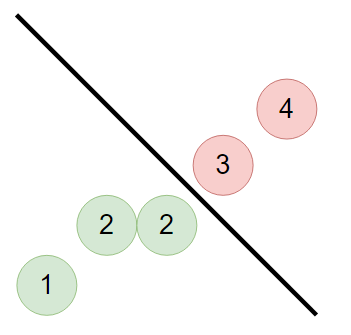This answer similar to Marius' answer, but instead of doing pure brute force I tried to deduce who were liars and who were truthers, here are my steps to find people who are 100% truthful/lying
Step 1:
I first ordered them just so it was easier for me to organize my thoughts
3) There are at least 1 liars.
2) There are at least 2 liars.
5) There are at least 2 liars.
1) There are at least 3 liars.
4) There are at least 4 liars.
Step 2:
Person (3) is telling the truth. If person (3) were lying, then there would be 0 liars, but having 0 liars would make all of them liars. This is a contradiction.
So there has to be at least 1 liar and (3) is 100% truthful.
Step 3
Person (4) is lying. Assuming there are at least 4 liars, then everyone is telling the truth, which means there are 0 liars. This is a contraction.
So (4) is 100% lying.
Step 4:
Person (1) is lying. Assuming there are at least 3 liars, then everyone is telling the truth besides person (4). This is a contradiction.
So (1) is 100% lying.
Step 5:
Persons (2) and (5) are telling the truth. I wasn't convinced that a simple contraction would suffice since there are two people, so I ran both scenarios of them lying and them being truthful. Note that they both have to be lying/truthful because their statements are the same.
Scenario 1: If persons (2) and (5) were lying and given who we have already deduced are liars, then we would have 4 liars which makes everyone's statements true. This is a contradiction.
Scenario 2: If persons (2) and (5) are telling the truth, then there would be 3 truth tellers and 2 liars. This scenario works for everyone's statements.
So 2 and 3 are 100% telling the truth.
Final:
The statements There are at least 1 liar and There are at least 2 liars are truthful and the statements There are at least 3 liars and There are at least 4 liars are falsehoods. So to answer the original question, there are two liars and they are persons (1) and (4).

